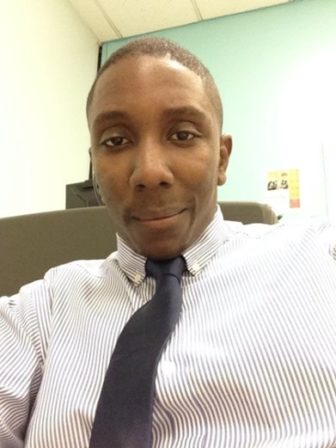Is it possible to educate youth in the adult criminal justice system? As Marshall Project reporter Eli Hager recently observed, “In the U.S., there is adult jail and there is school, and the two rarely go together.”
Advocates continually grapple with the daunting barriers to educating youth in adult facilities due to the staggering number of youths being held in adult jails and prisons. On average, each day 10,000 youth — a disproportionate number of whom are African-American and Latinx — are detained in adult facilities. Youth are held in adult jails and prisons when they are prosecuted and sentenced in the adult justice system. While many jurisdictions historically provided for the prosecution of some youth as adults, most current laws originated in the “tough on crime” era of the 1980s and ’90s. Although the notion of “superpredator” youth who require harsh punishment in the adult justice system that led to such laws has been debunked and juvenile crime has steadily decreased, as many as 75,000 youth per year are still charged and prosecuted as adults.

Mahari Simmonds
Once inside adult facilities, youth face abysmal education options and services. For example, a 2018 Southern Poverty Law Center (SPLC) report revealed that education provided to children in adult jails in Florida is either virtually nonexistent or seriously deficient. The report also noted that in many small jails, all children are housed in solitary confinement to keep them separate from adults and denied any education at all. Although youth in larger jails often receive a better education, those held in solitary confinement — either because of disciplinary issues or to keep them separate from adults — are still left out of educational programming.
Little to no help, especially if IEP needed
The lack of quality education in adult facilities is particularly problematic considering the numerous federal education laws and regulations that include educational programing in correctional facilities. With only limited exceptions, federal education laws require a free appropriate public education (FAPE) for all students in correctional institutions previously identified as having a disability; require assistance to English learner students so they can participate meaningfully in educational programs, and require auxiliary aids to students with hearing, vision or speech disabilities, among other protections.
Research also shows quality education inside prison is key to improving overall long-term outcomes (i.e. employment and health) and also reduces the likelihood of further incarceration. As part of my summer internship at Juvenile Law Center, I interviewed Jeree Thomas, policy director at Campaign for Youth Justice, to better understand this topic. She detailed the barriers to education for youth in the adult system, noting that youth held pretrial in adult jails have marginal access to educational services.
Instead of learning in a classroom, they are often given worksheets or, at times, nothing at all. Youth are not taught five days a week, and many adult facilities that claim to provide educational services in actual practice, do not. Thomas mentioned that jail administrators often justify offering substandard or no educational services by citing the short period of time youth remain in their custody, a troubling stance since education is strongly related to decreased delinquency and criminality.
Thomas further noted that adult prisons also fall well short of providing high-quality educational services that can truly be transformative for youth, especially those with disabilities. Despite increased access to more programming options (e.g. GED and career/technical programs), adult facilities generally cannot accommodate youth with Individualized Education Programs (IEPs) and sometimes change the IEP to incorporate only services the facility provides. The implications of this decision cannot be overstated: IEPs are specifically designed for youth who need additional educational supports due to disabilities to achieve their individual educational goals and are critical to their long-term success. When facilities do not meet youths’ IEPs, they further marginalize students with disabilities.
Even innovative programs face barriers. In 2017, a national nonprofit, the Center for Educational Excellence in Alternative Settings (CEEAS), contracted with the Orleans Parish School Board to start Travis Hill School for youth held in a New Orleans adult jail. With a mission to create a “transformative learning environment,” CEEAS created a model educational program where youth being held in jail attend high school full-time in classrooms equipped with modern technologies.
However, even strong education programs within adult facilities are constrained by the disciplinary practices and restrictions of the facilities themselves. At Travis Hill, “[h]alf of any class might not show up one day because they’ve been put on lockdown or in solitary confinement.” Around the country, youth held in solitary may have access to books, though they are more likely to receive nothing at all — neither teachers, papers, pens nor other materials necessary to learn and complete assignments.
Girls and LGBTQ youth in adult facilities face additional challenges that are likely to affect their access to education. In Florida, SPLC found that girls in adult jails were often placed in solitary confinement or medical and mental health segregation wings that were not equipped to provide education because the children’s units were limited to boys. Despite females being the fastest-growing segment of the incarcerated population, there is unfortunately limited data on whether girls or LGBTQ youth in adult facilities (or juvenile placements, for that matter) are receiving appropriate educational services.
Juvenile justice advocates and law enforcement officers alike increasingly recognize that the best solution may be to ensure that children charged with or convicted of a crime are treated as children. Every day spent in an adult jail or prison facility not only puts youth at risk of physical harm, but also, given the significant barriers articulated above, compromises any real hope of providing them with quality educational services and real opportunities for success upon release. If we are truly invested in the rehabilitation of youth, we must pursue systemic changes that align with this goal: keeping youth out of adult correctional facilities and in programs where they can receive the quality education required.
Mahari Simmonds is a second year law student at CUNY School of Law, where he is vice president of the Black Law Students Association. He completed a summer internship at the Juvenile Law Center. Mahari intends on continuing his commitment to juvenile justice and education policy issues.

If we can inspire people in our best ways that education can change their life, I strongly believe it will not only reduce the rate of recidivism, but change their lives as well. It takes the right atmosphere and strong teacher to do this. Very good article and good points made.
Pingback: Seven Days in Solitary [1/7/19] | Solitary Watch
Thank you for this article. I have been advocating for this as an educator for a long time. The children in adult jails do not receive any education.
I teach high school to juveniles charged as adults and housed in adult jail. Our program is phenomenal and includes a Special Education teacher, IEP services and more. But even that is not enough. Right now, there are roughly 32 students in the juvenile unit. On any given day, 17 or fewer will come to morning classes (Math and English) and maybe 20 will come to afternoon classes (Science and History). We have 3 middle school kids who receive an additional. 1.5 instructional hours per day. Those who don’t come to class are given work inside their cells. Our program is among the best of its kind. It is full time and also includes transition services for students who get released. That it exists within the constraints of the adult jail system means that it is inadequate in providing real academic advancement. I love what I do and I love every one of my kids. But I sincerely wish that there were no kids in jail for me to attempt to teach.
Hi Jonna,
Your program sounds exceptional. Can I ask which state it’s in?
Yes, please tell me where you are. We also ran a program in three adult jails and had all of the services included and held graduations. We are in Alabama and tried to continue the program but the state department of education did not see this as a need and the program ended last fall.
Hello , I feel better to hear prisons have a good IPE program , my son was transfer to Lewis prison in Az , he just turn 16 and I’m so worry for his IEP education but I guess they will help him .